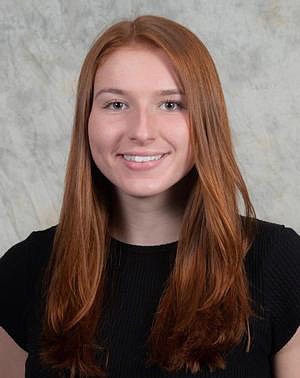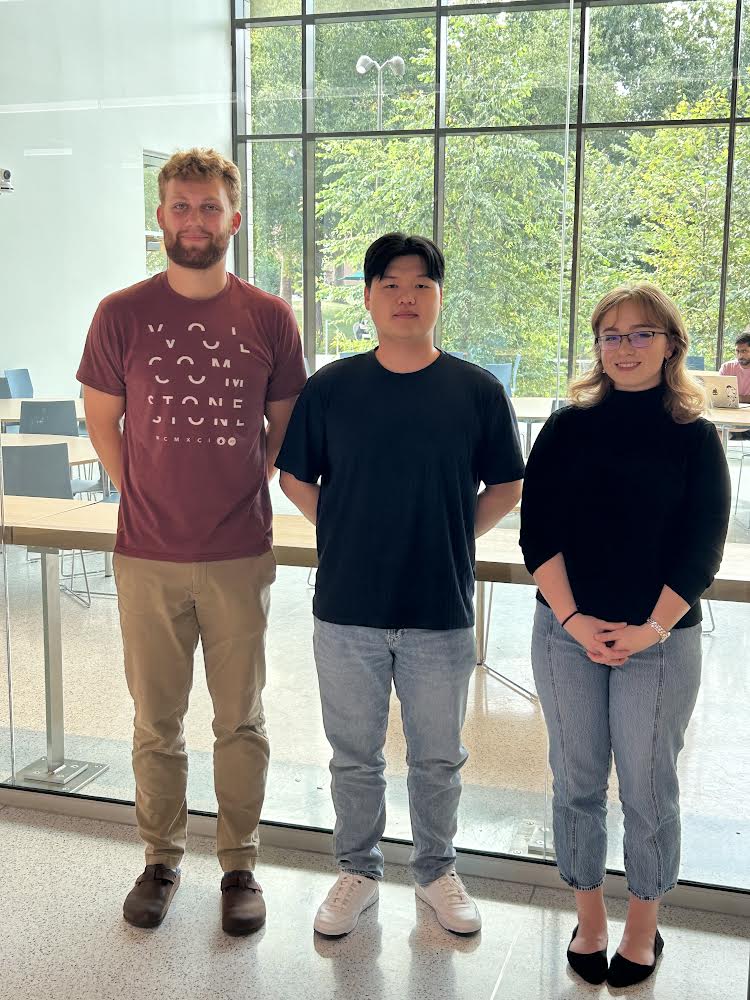
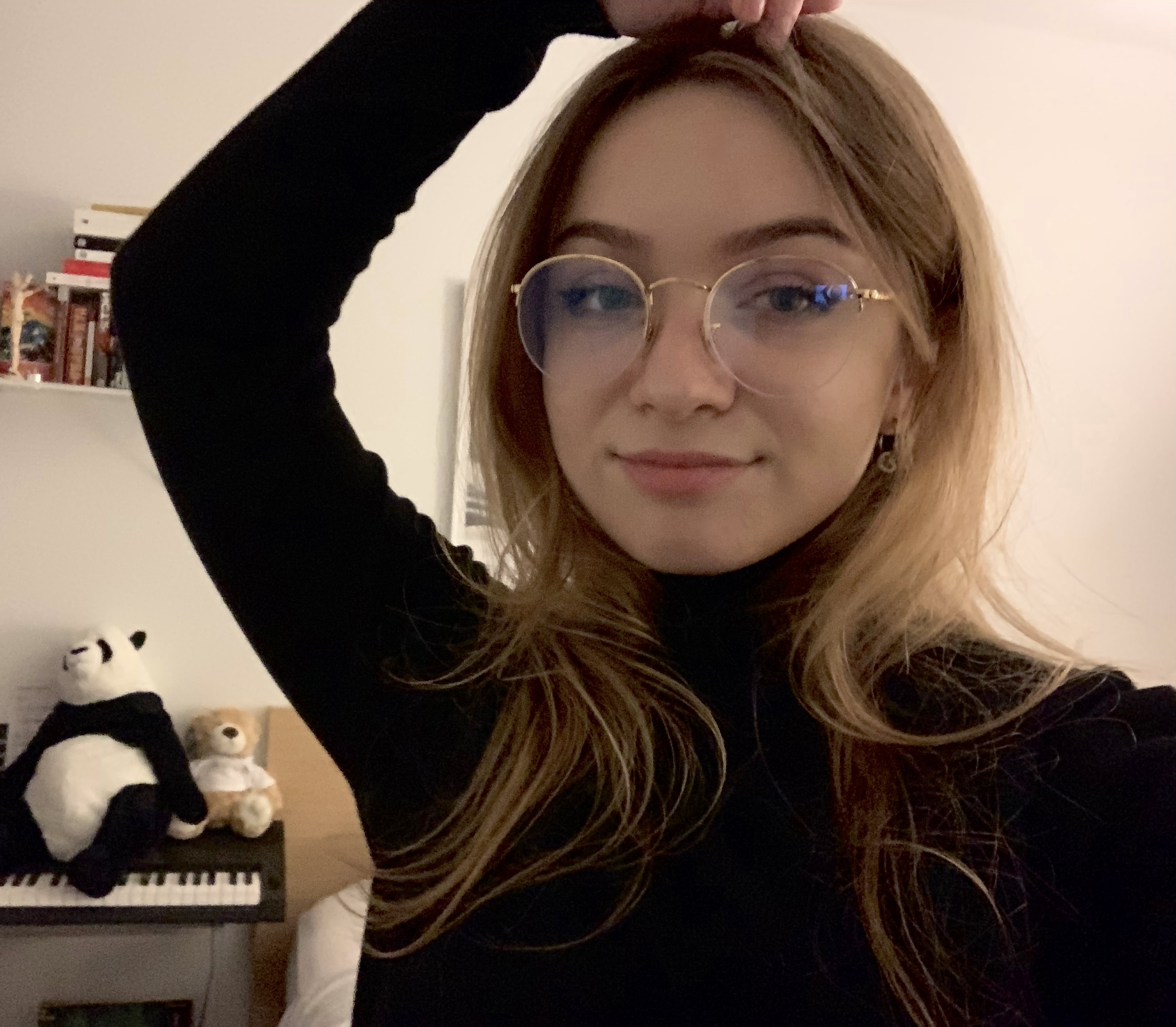




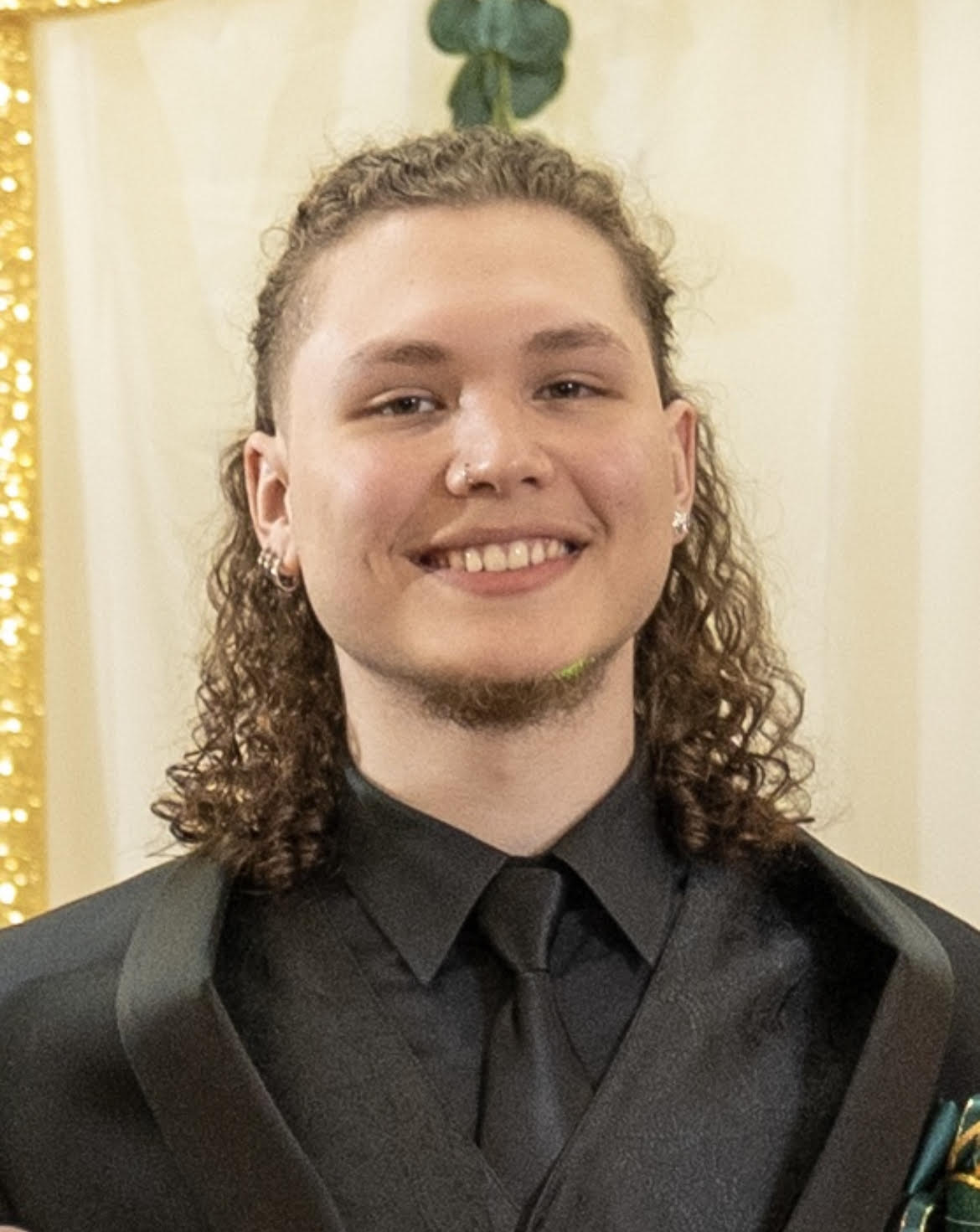 I am a rising senior actively engaged in research under the mentorship of ChBE Professor Kelly Schultz. This research opportunity not only serves as an academic pursuit but also as a stepping stone towards a promising and impactful professional journey ahead.
I am a rising senior actively engaged in research under the mentorship of ChBE Professor Kelly Schultz. This research opportunity not only serves as an academic pursuit but also as a stepping stone towards a promising and impactful professional journey ahead.
During this summer, my research focused on utilizing bulk rheology and multi-particle tracking techniques to gain comprehensive insights into the mechanical and dynamic properties of hydrogels. By subjecting hydrogel samples to controlled deformations through bulk rheology experiments, I aim to analyze how varying degrees of cross-linking impact their viscoelastic behavior, helping to establish a correlation between cross-link density and mechanical response. Furthermore, employing multi-particle tracking methods enables me to delve into the microscopic dynamics of these materials, observing the individual movements of particles within the hydrogel network and elucidating how cross-linking influences their diffusion and mobility. This interdisciplinary approach not only contributes to the fundamental understanding of hydrogel mechanics at both macroscopic and microscopic scales but also holds potential implications for designing advanced biomaterials with tailored properties for applications ranging from drug delivery to tissue engineering.
 I'm from Guam, a beautiful tropical island that rests in the Pacific Ocean near the Mariana Trench. I enjoy culinary adventures in my free time, partly because of the indulgence in creating something that people find amazing. For the same sentiment, I want to advance further in education as a chemical engineer after my undergraduate time. Although I haven’t decided on an area of interest, I planned to utilize research opportunities to explore the diversity of my major and its interdisciplinary applications. Along the way, I’m hoping to gain skills and experience in different fields that would prepare me for the future and determine what I want to do.
I'm from Guam, a beautiful tropical island that rests in the Pacific Ocean near the Mariana Trench. I enjoy culinary adventures in my free time, partly because of the indulgence in creating something that people find amazing. For the same sentiment, I want to advance further in education as a chemical engineer after my undergraduate time. Although I haven’t decided on an area of interest, I planned to utilize research opportunities to explore the diversity of my major and its interdisciplinary applications. Along the way, I’m hoping to gain skills and experience in different fields that would prepare me for the future and determine what I want to do.
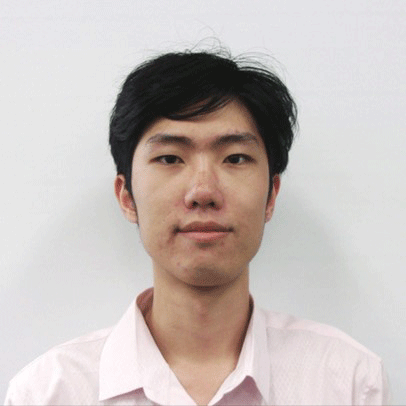 Plastic (polyethylene) has been overly produced and used worldwide because of its resilient and lightweight properties. Human lives have become more convenient because of the usage of plastic. However, the large amounts of plastic waste left are starting to cause problems. Until now, over 7.4 billion metric tons of plastics are in the earth’s system. Less than 10% of plastics are recycled worldwide because making new plastic costs less than recycling plastic waste. It is important to recycle or upcycle plastic. One of the methods to depolymerize polyethylene is an organic reaction called olefin cross-metathesis. With sacrificial alkane (pentane in our case) added, olefin cross-metathesis can break down longer polyethylene into a distribution of shorter alkanes. In our research, we want to learn about the most plausible reaction pathways to break down polyethylene and their thermodynamics. However, the reaction networks could be extremely complicated. To help us solve this problem, machine learning and cheminformatics are utilized. For example, RING (Rule Input Network Generator) is used to generate all the possible reaction networks. RDkit, the cheminformatics, is used to generate possible conformers of each molecule. ANI-1, a neural network, is used to calculate the potential energy of each molecule. We have a workflow from generating the reaction network to determining which pathways are the most plausible by their thermodynamics. In the future, we are going to try analyzing other reactants other than plastic, for example, rubber. Also, we want to try to analyze the effect of adding functional groups to polyethylene using metathesis.
Plastic (polyethylene) has been overly produced and used worldwide because of its resilient and lightweight properties. Human lives have become more convenient because of the usage of plastic. However, the large amounts of plastic waste left are starting to cause problems. Until now, over 7.4 billion metric tons of plastics are in the earth’s system. Less than 10% of plastics are recycled worldwide because making new plastic costs less than recycling plastic waste. It is important to recycle or upcycle plastic. One of the methods to depolymerize polyethylene is an organic reaction called olefin cross-metathesis. With sacrificial alkane (pentane in our case) added, olefin cross-metathesis can break down longer polyethylene into a distribution of shorter alkanes. In our research, we want to learn about the most plausible reaction pathways to break down polyethylene and their thermodynamics. However, the reaction networks could be extremely complicated. To help us solve this problem, machine learning and cheminformatics are utilized. For example, RING (Rule Input Network Generator) is used to generate all the possible reaction networks. RDkit, the cheminformatics, is used to generate possible conformers of each molecule. ANI-1, a neural network, is used to calculate the potential energy of each molecule. We have a workflow from generating the reaction network to determining which pathways are the most plausible by their thermodynamics. In the future, we are going to try analyzing other reactants other than plastic, for example, rubber. Also, we want to try to analyze the effect of adding functional groups to polyethylene using metathesis.
 My research, which was conducted in the lab of ChBE Professor James Gilchrist, and under the guidance of Dr. Samuel Wilson-Whitford, investigated the physics of Janus particles. Janus particles are small (>1mm), and they are special because one or both hemispheres of the particle is functionalized- or manufactured in a way to provide different physical properties on either side. Our particles are functionalized on one side using iron, which essentially made the particles behave like little magnets. Therefore, we can manipulate the particles using exterior magnetic fields. The specific topic I was researching related to Janus particles was how they can be utilized to enhance transport through a porous medium (like soil). To test these properties, I created samples in which the substrate was gel beads. The particles were “rolled” through the sample via a wheel with four bar magnets attached to it, which was suspended above the sample. Our apparatus applied a torque to each Janus particle within the sample, causing them to move, when ordinarily, they would remain stationary. We were able to prove that this indeed is an effective method of enhancing transport in porous systems- and this type of research has implications in various fields, such as in medicine- where “microrollers” are already studied as a method of medicine delivery, environmental applications, like cleaning up hazardous waste spills, and even in reactor/catalyst design. "This research was incredibly rewarding, as I could immediately see the effects of any manipulations to the system and I gained invaluable experience" says Kramer. "Doing this research gave me direction."
My research, which was conducted in the lab of ChBE Professor James Gilchrist, and under the guidance of Dr. Samuel Wilson-Whitford, investigated the physics of Janus particles. Janus particles are small (>1mm), and they are special because one or both hemispheres of the particle is functionalized- or manufactured in a way to provide different physical properties on either side. Our particles are functionalized on one side using iron, which essentially made the particles behave like little magnets. Therefore, we can manipulate the particles using exterior magnetic fields. The specific topic I was researching related to Janus particles was how they can be utilized to enhance transport through a porous medium (like soil). To test these properties, I created samples in which the substrate was gel beads. The particles were “rolled” through the sample via a wheel with four bar magnets attached to it, which was suspended above the sample. Our apparatus applied a torque to each Janus particle within the sample, causing them to move, when ordinarily, they would remain stationary. We were able to prove that this indeed is an effective method of enhancing transport in porous systems- and this type of research has implications in various fields, such as in medicine- where “microrollers” are already studied as a method of medicine delivery, environmental applications, like cleaning up hazardous waste spills, and even in reactor/catalyst design. "This research was incredibly rewarding, as I could immediately see the effects of any manipulations to the system and I gained invaluable experience" says Kramer. "Doing this research gave me direction."
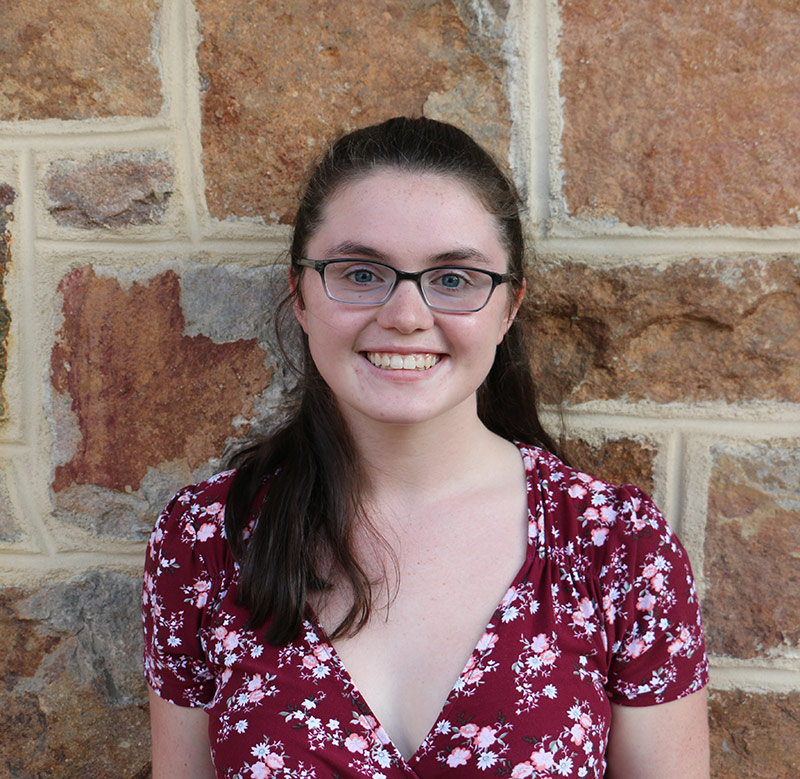 Chronic skin wounds are a major healthcare issue that have increased the need for treatment methods to be developed and implemented into clinical care. Stem cell therapy has proven to be a valuable treatment option due to their ability to differentiate into other types of cells, aiding in recovery of damaged tissues. To be inserted within the body, they need to be manually deactivated and inserted within a hydrogel, compatible with the composition of the human body. In wound healing, pro-inflammatory and anti-inflammatory cytokines are naturally released to help direct and regulate stem cell motility. Within the lab of ChBE Professor Kelly Schultz, I aided in measuring cell-material interactions in synthetic hydrogels, as well as determining the change of human mesenchymal stem cell (hMSC) motility and pericellular degradation when cytokines appear within wound environments. The design of existing hydrogel scaffolds targets the direct tissue which needs repair but fails to account for the environment surrounding it. My work focused on assessing the effectiveness of varied hydrogel components through creation of a cell gradient. Through the creation of a 3D printed microfluidic chamber, I measured the ability of fluorescent dye to diffuse through hydrogel, which will create a gradient that impacts cell movement. I also assisted with cell tracking through multiple particle tracking (MPT), which is a technique that takes the mean squared displacement of embedded probe particles as they move within cells overtime, helping to characterize changes in a cell's microenvironment. Through MATLAB and Igor software in the MPT process, I was able to generate a value which determined the state of the gel that the cells were contained in.
Chronic skin wounds are a major healthcare issue that have increased the need for treatment methods to be developed and implemented into clinical care. Stem cell therapy has proven to be a valuable treatment option due to their ability to differentiate into other types of cells, aiding in recovery of damaged tissues. To be inserted within the body, they need to be manually deactivated and inserted within a hydrogel, compatible with the composition of the human body. In wound healing, pro-inflammatory and anti-inflammatory cytokines are naturally released to help direct and regulate stem cell motility. Within the lab of ChBE Professor Kelly Schultz, I aided in measuring cell-material interactions in synthetic hydrogels, as well as determining the change of human mesenchymal stem cell (hMSC) motility and pericellular degradation when cytokines appear within wound environments. The design of existing hydrogel scaffolds targets the direct tissue which needs repair but fails to account for the environment surrounding it. My work focused on assessing the effectiveness of varied hydrogel components through creation of a cell gradient. Through the creation of a 3D printed microfluidic chamber, I measured the ability of fluorescent dye to diffuse through hydrogel, which will create a gradient that impacts cell movement. I also assisted with cell tracking through multiple particle tracking (MPT), which is a technique that takes the mean squared displacement of embedded probe particles as they move within cells overtime, helping to characterize changes in a cell's microenvironment. Through MATLAB and Igor software in the MPT process, I was able to generate a value which determined the state of the gel that the cells were contained in.
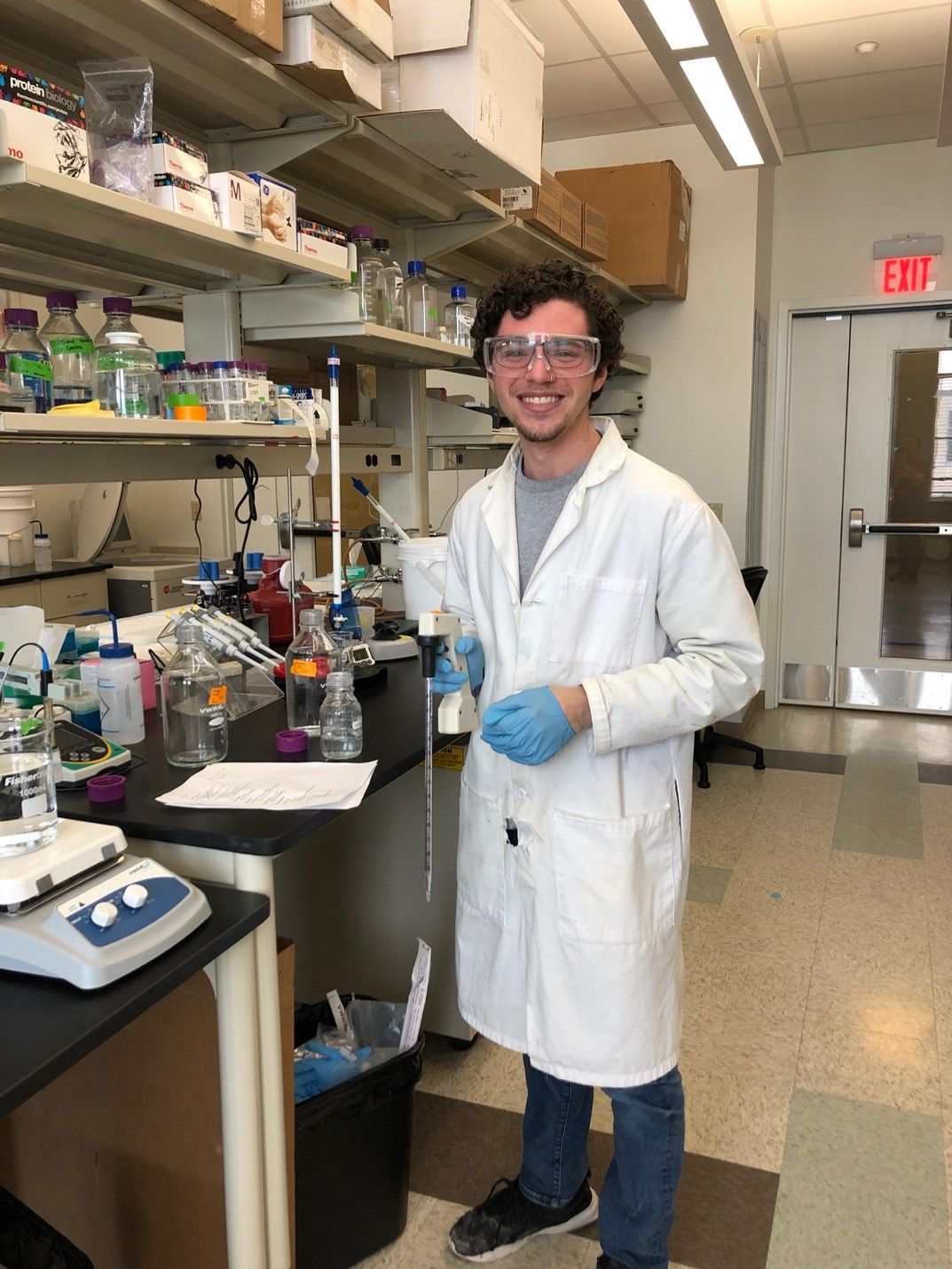 This summer, I worked in lab of ChBE Professor Angela Brown on a project that dealt with a single mechanism of antibiotic resistance: reduction of intake of antibiotic molecules. Gram-negative bacteria, which are often associated with antibiotic resistance, have an outer membrane which acts as a barrier for the types of nutrients and substrates that are allowed into the cell. Proteins called porins allow for the influx of these molecules, but bacterial cells can modify them to exclude antibiotics specifically, which reduces the effect that the therapeutic will have on the cell. To overcome this issue, our approach was to load bacterial outer membrane vesicles (OMVs) with antibiotics in order to deliver them in a controlled fashion by vesicle fusion; though, this approach had some intrinsic problems because of the biological nature of the OMVs. We supplemented our delivery OMVs by hybridizing them with synthetic liposomes and cholesterol to improve their stability and fusion capabilities and determined that the synthetic liposome-OMVs (L-OMVs) were more effective at delivering antibiotics than OMVs alone. This year, as my senior thesis, I will investigate the effects of lipid charge on L-OMV-bacteria fusion.
This summer, I worked in lab of ChBE Professor Angela Brown on a project that dealt with a single mechanism of antibiotic resistance: reduction of intake of antibiotic molecules. Gram-negative bacteria, which are often associated with antibiotic resistance, have an outer membrane which acts as a barrier for the types of nutrients and substrates that are allowed into the cell. Proteins called porins allow for the influx of these molecules, but bacterial cells can modify them to exclude antibiotics specifically, which reduces the effect that the therapeutic will have on the cell. To overcome this issue, our approach was to load bacterial outer membrane vesicles (OMVs) with antibiotics in order to deliver them in a controlled fashion by vesicle fusion; though, this approach had some intrinsic problems because of the biological nature of the OMVs. We supplemented our delivery OMVs by hybridizing them with synthetic liposomes and cholesterol to improve their stability and fusion capabilities and determined that the synthetic liposome-OMVs (L-OMVs) were more effective at delivering antibiotics than OMVs alone. This year, as my senior thesis, I will investigate the effects of lipid charge on L-OMV-bacteria fusion.
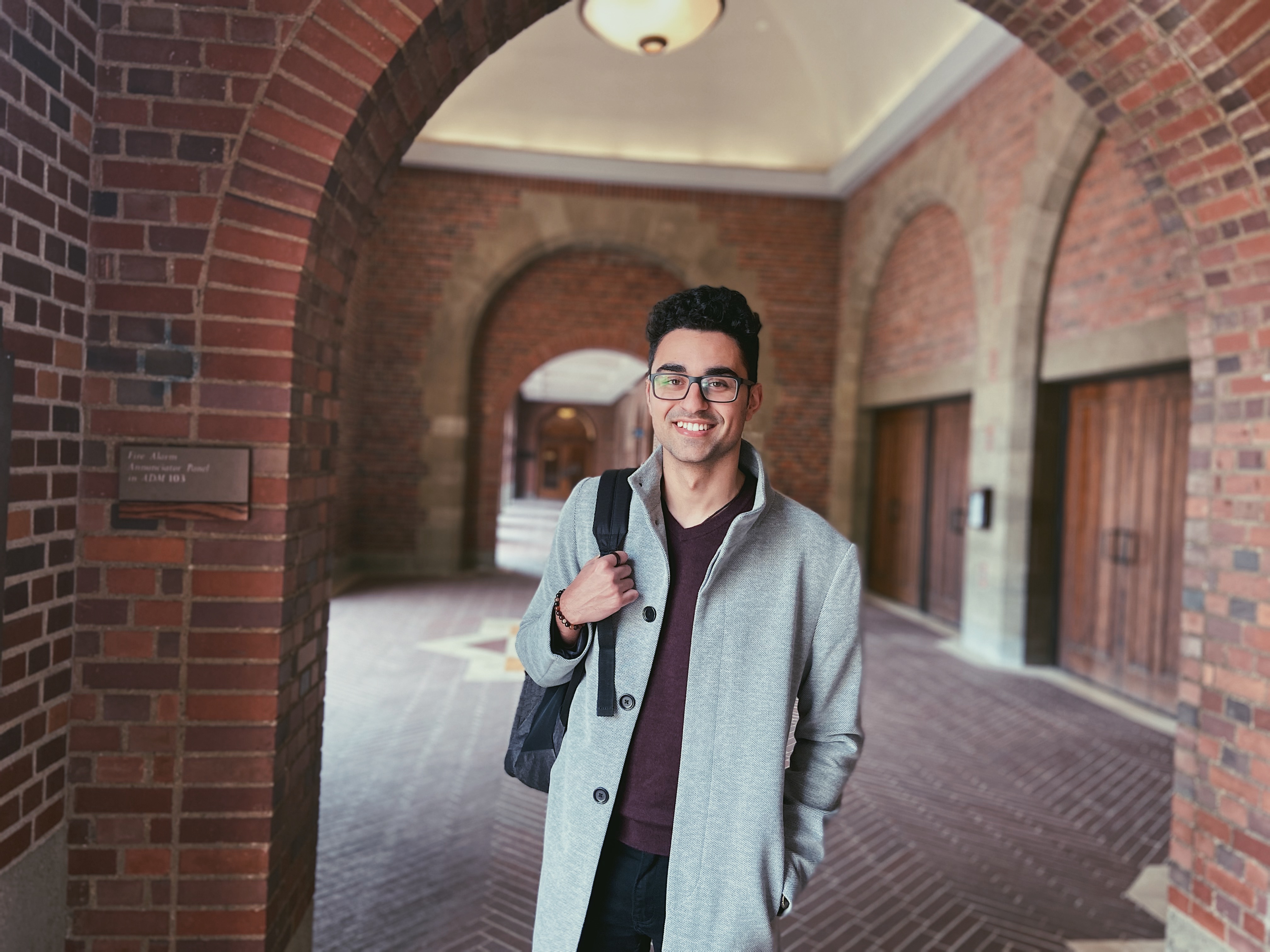
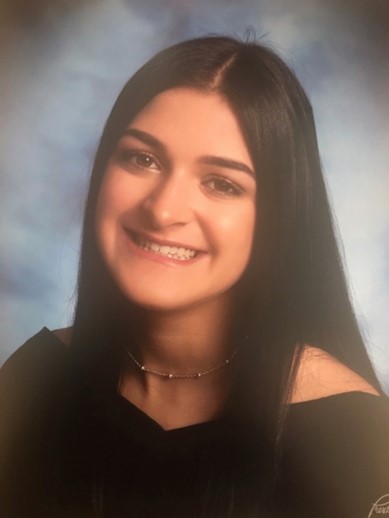 The project that I worked on has the goal of producing cultured meat in the laboratory. This includes engineering a whole cut of meat that has both the texture and taste which allows for their broad adoption. My specific role on the project included beginning the tissue engineering strategy of creating a hybrid hydrogel scaffold that will be used to encourage satellite cells to differentiate into skeletal muscle fibers. The project also continues to develop strategies to efficiently deliver oxygen and glucose to these cells to aid in their growth, as well as mimicking the nervous system to aid in fiber growth.
The project that I worked on has the goal of producing cultured meat in the laboratory. This includes engineering a whole cut of meat that has both the texture and taste which allows for their broad adoption. My specific role on the project included beginning the tissue engineering strategy of creating a hybrid hydrogel scaffold that will be used to encourage satellite cells to differentiate into skeletal muscle fibers. The project also continues to develop strategies to efficiently deliver oxygen and glucose to these cells to aid in their growth, as well as mimicking the nervous system to aid in fiber growth.
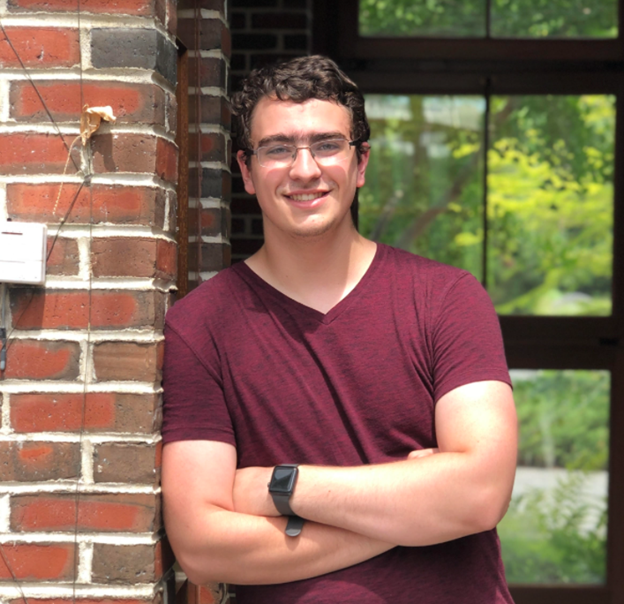 This summer, my research consisted of one main project, with the primary goal of learning new and improved methods to simulate proteins. This project lies at the intersection of biophysics and computer science, and I worked in collaboration with another research team from UC Berkeley. The premise of the project revolved around a computer science concept of Machine Learning, where one can use data to train what is called a neural network. For our purposes, we provided the neural network with different data about the amino acid sequence and chain length of various proteins, with the goal that the neural network could train itself to take in that information and use it to predict physical properties of the proteins, such as its radius of gyration. By perfecting our training technique, these neural networks could hopefully be used to predict and model increasingly complicated proteins, allowing us to understand their conformations and simulate them with better success in the future.
This summer, my research consisted of one main project, with the primary goal of learning new and improved methods to simulate proteins. This project lies at the intersection of biophysics and computer science, and I worked in collaboration with another research team from UC Berkeley. The premise of the project revolved around a computer science concept of Machine Learning, where one can use data to train what is called a neural network. For our purposes, we provided the neural network with different data about the amino acid sequence and chain length of various proteins, with the goal that the neural network could train itself to take in that information and use it to predict physical properties of the proteins, such as its radius of gyration. By perfecting our training technique, these neural networks could hopefully be used to predict and model increasingly complicated proteins, allowing us to understand their conformations and simulate them with better success in the future.

